8 Supposedly Healthy Dinners That Don’t Help Much And 9 That Truly Support Blood Sugar and Weight Goals
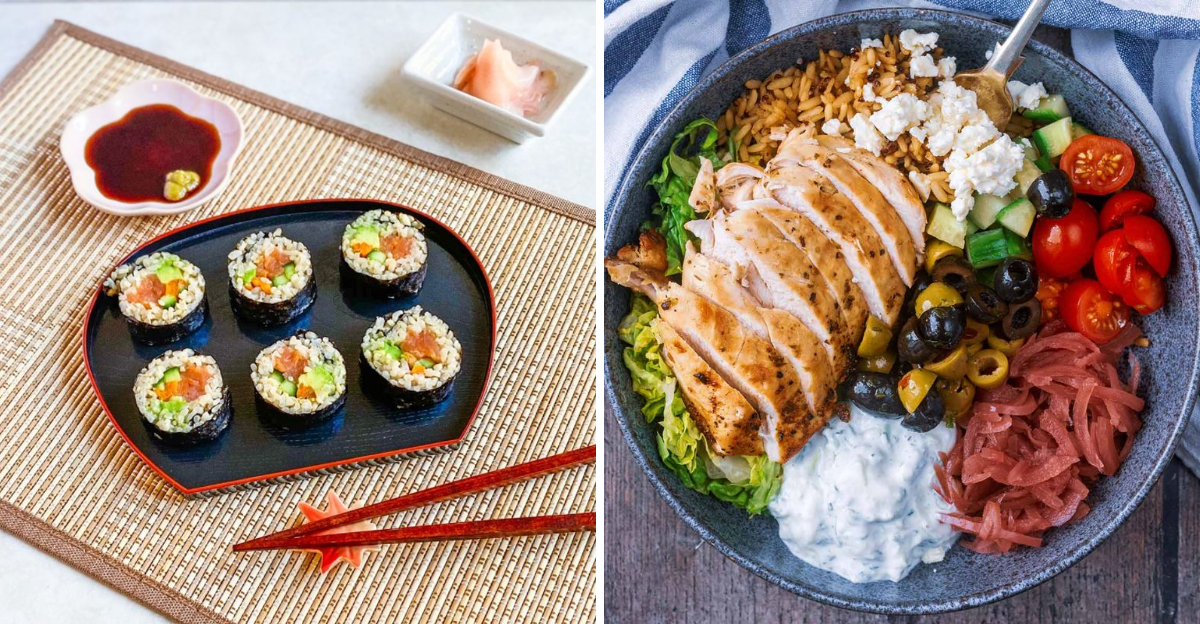
Just because something sounds healthy doesn’t mean it actually supports your wellness goals. Many so-called “healthy” dinners are loaded with hidden sugars, refined carbs, or empty calories that can spike your blood sugar and sabotage your weight-loss efforts. But there are also plenty of delicious, nutrient-packed meals that do make a difference—keeping you full, stable, and satisfied. Here are 8 dinners that might not be as healthy as they seem, followed by 9 meals that are truly blood sugar–friendly and great for weight management.
1. Brown Rice Sushi Rolls

Brown rice sushi rolls might sound like a healthier option, but they often fall short in terms of nutritional balance. While swapping white rice for brown is a step in the right direction, it still remains high in carbohydrates with minimal protein or fat content.
The result? A meal that may leave you feeling hungry again in just a short time. For many, it’s disappointing to realize that this seemingly healthy choice might not aid in maintaining balanced blood sugar levels.
2. Grilled Chicken Caesar Salad

Grilled Chicken Caesar Salad often appears on menus as a healthy option, yet it can be misleading. Although it includes lean protein from the chicken, the creamy dressing, cheese, and croutons add significant fat and calories.
In fact, in some cases, this salad can contain more calories than a classic burger. This unexpected truth makes this dish less supportive of weight management goals. Many are surprised to learn that a seemingly innocuous salad can pack such a caloric punch.
3. Veggie Pasta with Marinara
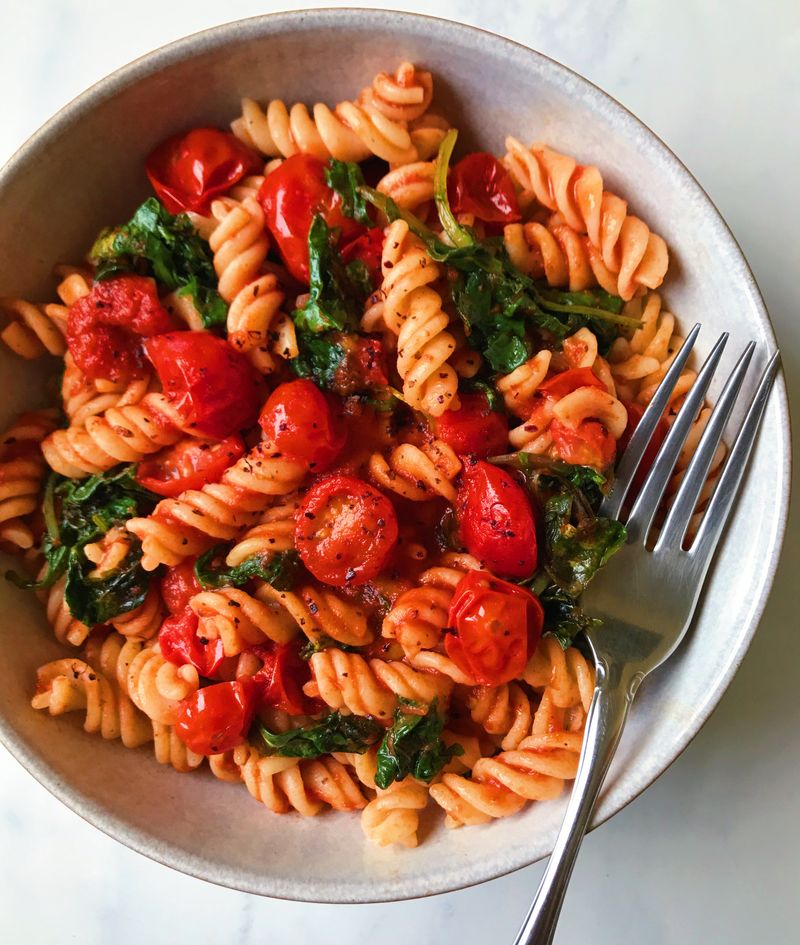
Veggie pasta with marinara sauce is often considered a healthy alternative to traditional pasta, but it can be deceptive. While the idea of plant-based pasta is appealing, it can fall short if it mostly consists of carbohydrates with low protein and fiber.
This combination might leave you unsatisfied and searching for snacks soon after. The dish’s lack of balance in macronutrients makes it less ideal for those aiming to maintain stable blood sugar levels.
4. Baked Sweet Potato with Toppings

A baked sweet potato in its simplest form is nutritious, but problems arise when it’s loaded with toppings like butter, marshmallows, or sour cream.
These additions transform a healthy option into a sugar-heavy meal. Such a dish can unexpectedly sabotage blood sugar control efforts. It’s a reminder that even naturally sweet foods can become less beneficial when over-indulged with extras.
5. Plant-Based Burgers with White Buns

Plant-based burgers are gaining popularity as a meat alternative, but they aren’t always as healthful as expected. Many varieties are highly processed and packed with sodium, especially when paired with a white bun.
This combination can be quite misleading for those prioritizing nutrition, as it results in a carb-heavy meal. Despite the intention to choose a healthier option, the actual nutritional profile might not align with wellness goals.
6. Store-Bought Grain Bowls
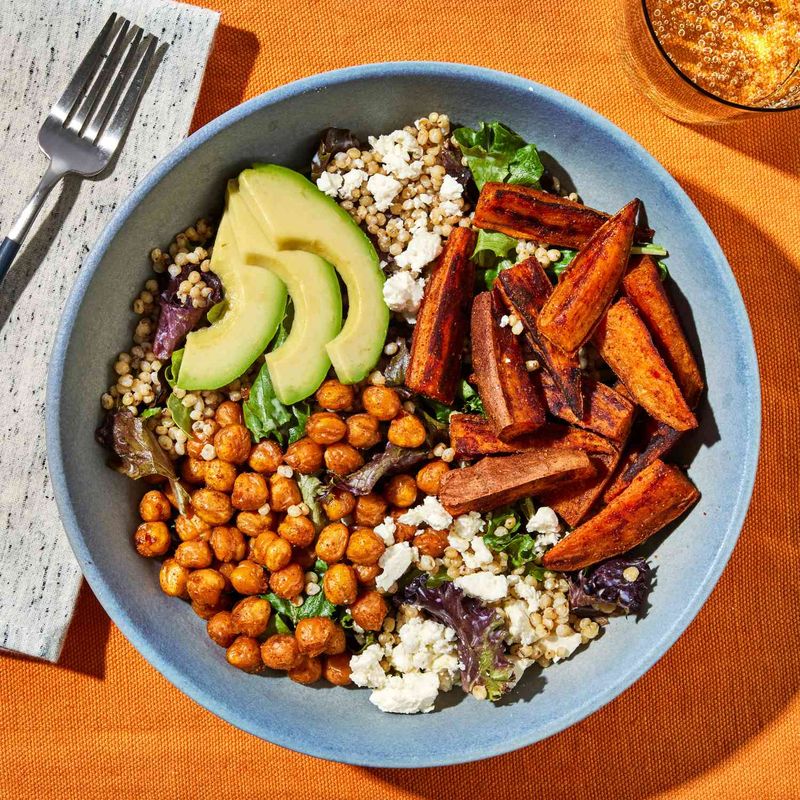
Store-bought grain bowls often present themselves as a convenient and nutritious meal option. However, these bowls can be packed with added sugars in sauces and a high ratio of carbs to protein.
The result is a meal that may not leave room for stable blood sugar levels. Many find it surprising that what looks like a balanced meal can be less than ideal for managing dietary needs.
7. Light Soup and Bread

Light soups paired with bread often appear as a modest meal choice, but they can be deceiving. Typically low in protein and high in starch, this combination might not satisfy for long.
The meal’s light nature may cause hunger to return sooner than desired. It’s an insightful lesson in how seemingly simple meals may not aid in maintaining energy or stability.
8. Stir-Fry with Bottled Teriyaki Sauce

Stir-fry dishes with bottled teriyaki sauce are often chosen for their quick preparation and tasty appeal. Yet, many bottled sauces are laden with sugar, leading to unexpected glucose spikes.
Despite the healthy appearance of vegetables and protein, the sauce’s sugar content can counteract the dish’s overall benefits. It’s an eye-opener that even fresh ingredients can be overshadowed by sauce choices.
9. Grilled Salmon with Roasted Broccoli and Cauliflower Rice
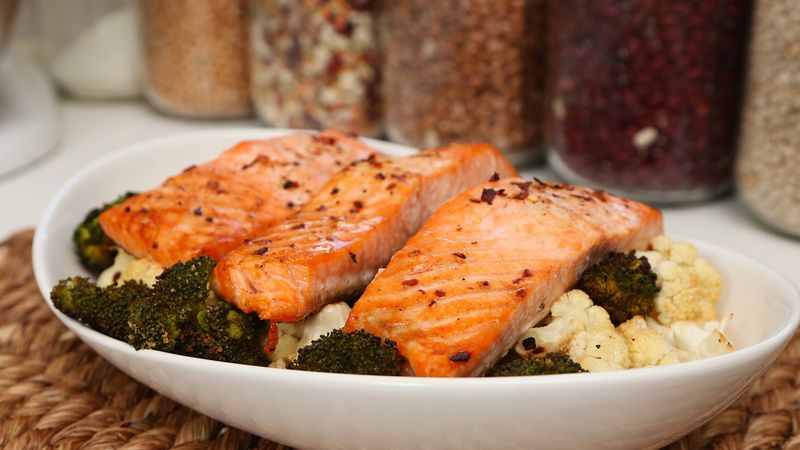
Considered a powerhouse meal for its high protein, omega-3s, and fiber content, grilled salmon with roasted broccoli and cauliflower rice is celebrated for its balance.
This dish offers a satisfying, low-carb option that supports both blood sugar management and weight loss goals. Many find it a delightful combination that doesn’t just support health but delights the palate too.
10. Zucchini Noodle Bowl with Ground Turkey and Pesto

Zucchini noodle bowls with ground turkey and pesto provide a flavorful low-carb alternative to traditional pasta. They’re packed with protein and healthy fats, making them a favorite for maintaining balanced energy.
The bold taste of pesto brings vibrant life to the dish, ensuring satisfaction without the carb-heavy downsides. It’s a modern twist on an Italian classic that suits health-conscious eaters wanting to indulge without compromise.
11. Lentil and Veggie Stew
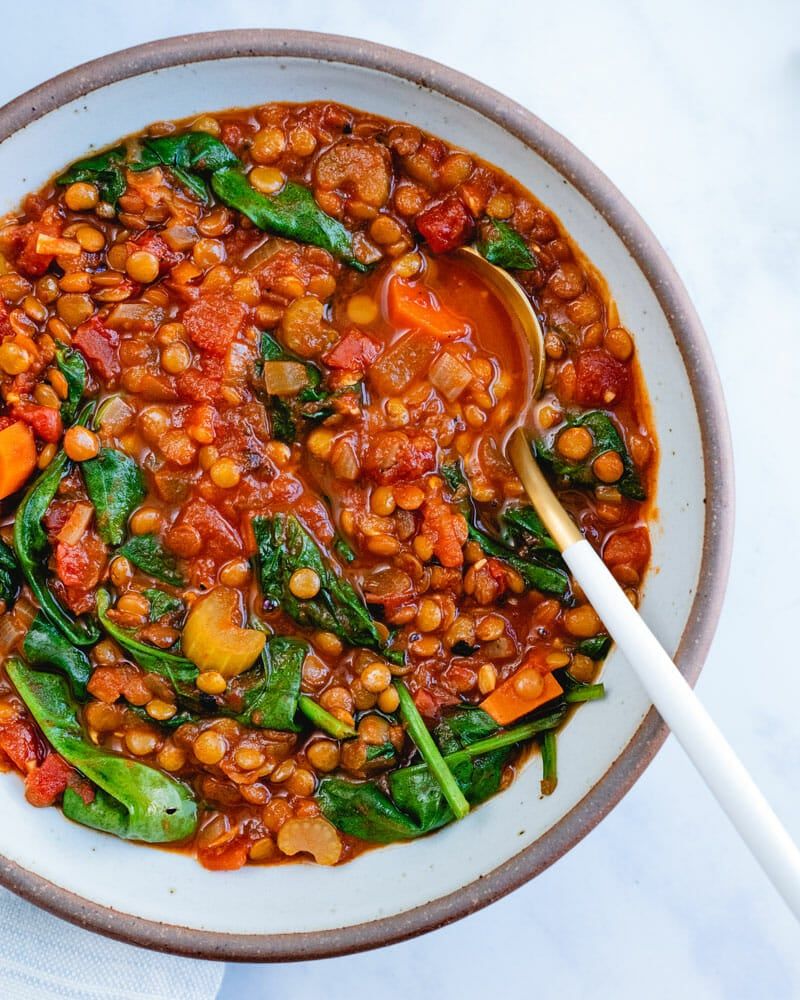
Lentil and veggie stew stands out for its nourishing complexity, providing a substantial meal that stabilizes blood sugar while keeping you full.
Lentils offer complex carbs and fiber, key components in supporting long-lasting energy. This comforting stew is often embraced for its heartwarming qualities, perfect for chilly nights when warmth and nutrition are both called for.
12. Baked Chicken Thighs with Garlic Green Beans and Mashed Cauliflower

Baked chicken thighs paired with garlic green beans and mashed cauliflower provide a delightful balance of flavors and nutrients.
This dish offers protein, fiber, and a comforting taste that doesn’t stray from health goals. It’s a dinner that feels like indulging without the guilt, often hailed by those who relish a flavorful yet nutritious meal.
13. Shrimp Stir-Fry with Coconut Aminos and Veggies

Shrimp stir-fry with coconut aminos and veggies is a lower-sugar alternative to traditional stir-fries. Lean protein from shrimp combined with fiber-rich vegetables makes this a fast, flavorful, and glucose-friendly meal.
The use of coconut aminos instead of soy sauce ensures a savory taste without added sugars. It’s a quick fix for dinner that doesn’t sacrifice taste for nutrition.
14. Quinoa Salad with Chickpeas, Cucumber, and Olive Oil

Quinoa salad with chickpeas, cucumber, and olive oil embodies a harmonious blend of whole grains, plant-based protein, and healthy fats.
This combination provides sustainable energy and fullness, preventing sugar crashes. The freshness and ease of preparation make it an appealing choice for those seeking a light yet satisfying dish.
15. Turkey Lettuce Wraps with Avocado and Salsa
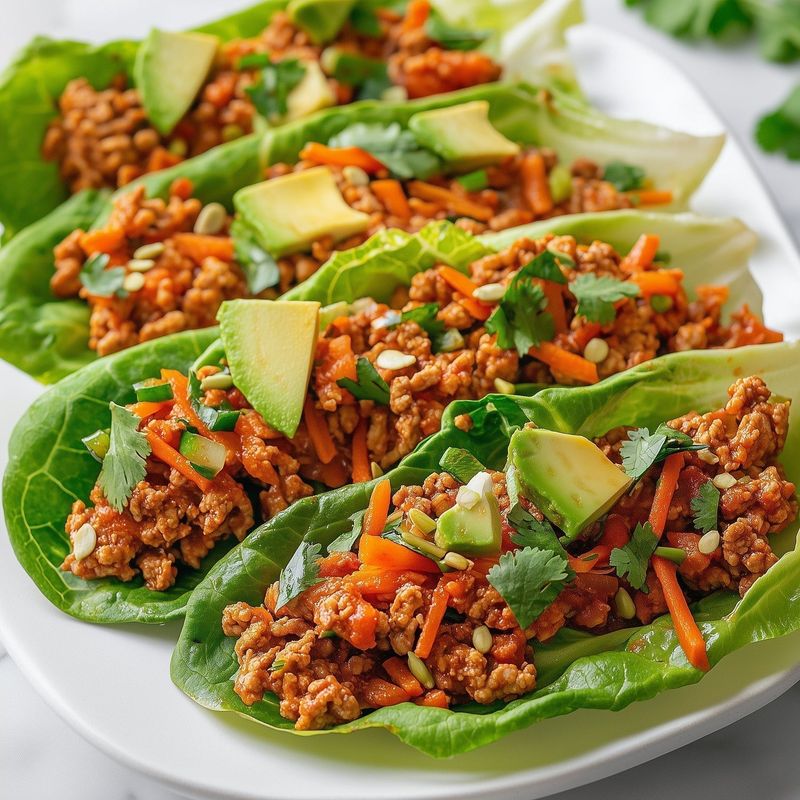
Turkey lettuce wraps with avocado and salsa offer a refreshing twist on traditional wraps. They’re low in carbs and rich in protein and healthy fats, making them excellent for blood sugar control.
Avocado adds creaminess, while salsa introduces a zesty kick. It’s a meal that feels vibrant and fresh, perfect for those aiming to maintain energy without the carb load.
16. Grilled Tofu with Roasted Brussels Sprouts and Tahini Dressing

Grilled tofu with roasted Brussels sprouts and tahini dressing is a plant-based delight packed with protein, fiber, and anti-inflammatory nutrients.
The creamy tahini dressing complements the dish’s earthy tones, making it both delicious and nutritious. It’s a choice that caters to those looking for a hearty, plant-based meal that satisfies both palate and wellness goals.
17. Greek Chicken Bowl with Cauliflower Rice, Feta, and Tzatziki
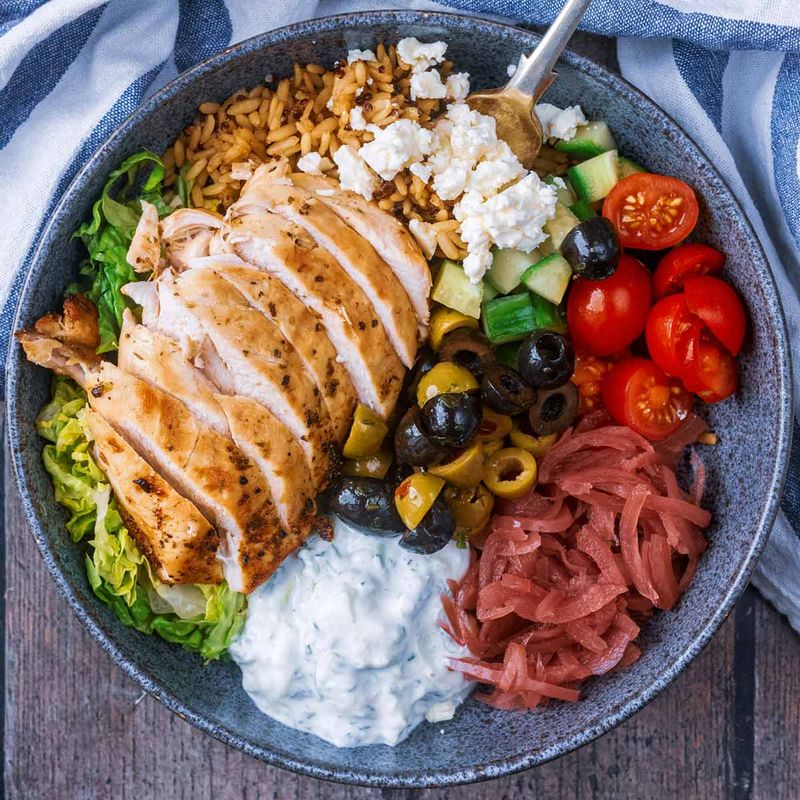
Greek chicken bowl with cauliflower rice, feta, and tzatziki offers a flavorful yet low-carb twist on a Mediterranean classic.
The combination of lean protein, creamy feta, and refreshing tzatziki creates a balanced and filling meal. It’s a dish that feels indulgent but aligns with blood sugar-friendly principles, satisfying cravings without the carb overload.
